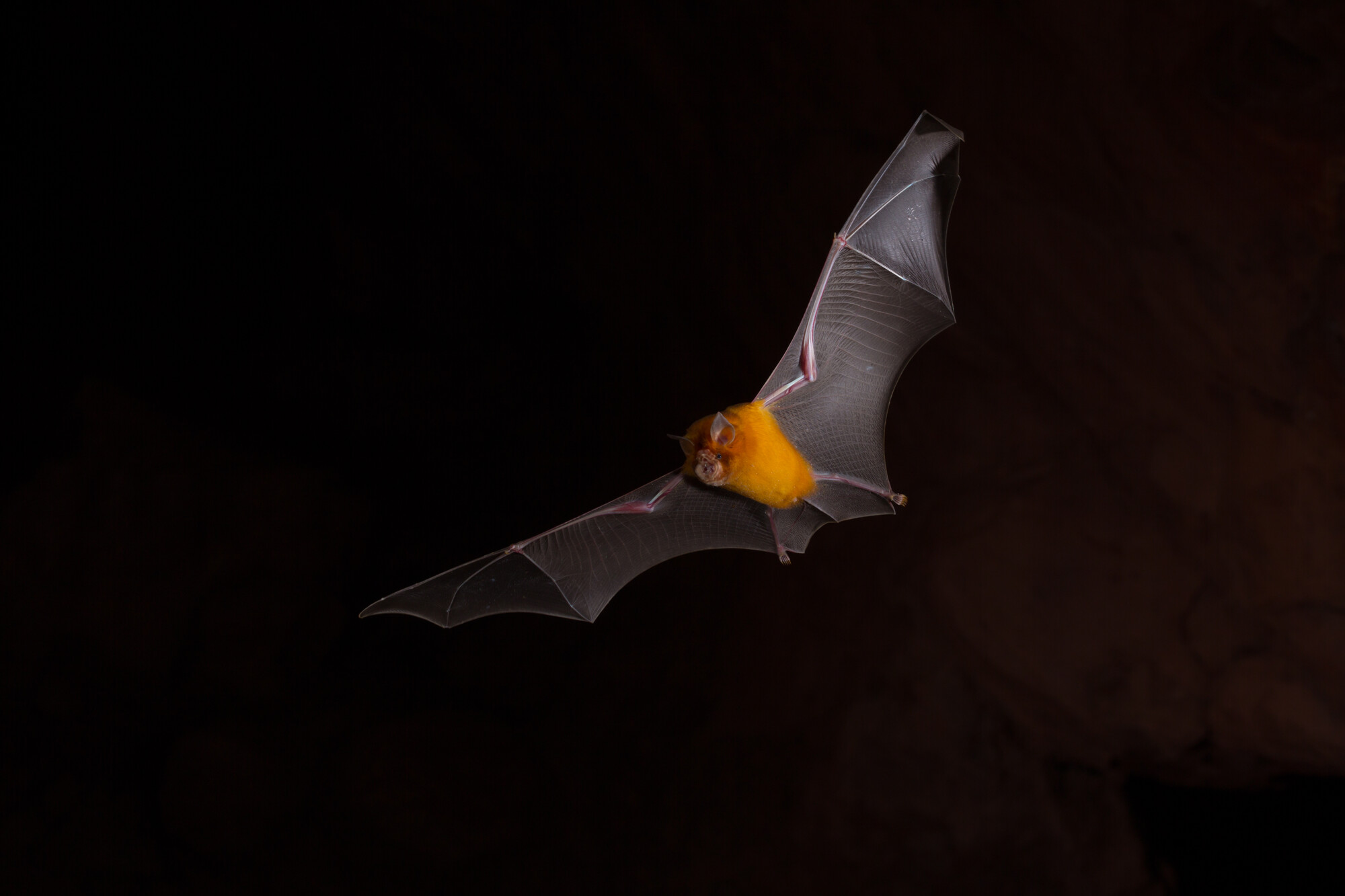This bat occurs only in the Pilbara and adjacent fringes of the Gascoyne bioregion. It is recognised as a distinct form of the orange leaf-nosed bat, the only arid-zone population of the species, thought to have been isolated for at least 30,000 years due to a lack of rocky outcrops suitable for roosting in the Great Sandy Desert. The use of different frequencies for echolocation is one of the distinctions of the Pilbara form. Its taxonomic status (for example, whether it is a separate subspecies) has not been resolved.
This small, fast-flying, highly agile bat hunts beetles, moths and other insects at night. It survives close to its eco-physiological limits in the Pilbara, and needs a high rate of insect capture to sustain its energetically demanding form of hunting and nearby daytime roosts that help maintain its body temperature and conserve water (this species cannot enter torpor). The availability of daytime roosts is thought to be the primary constraint on where it occurs. Many of its roosts are disused underground mines.
The major conservation priority is to preserve the limited number of known daytime roosts used by the Pilbara leaf-nosed bat. Most known maternity roosts are caves in banded ironstone that may be mined or underground gold or copper mine adits that are collapsing or being open-cut mined. Unless there is intervention to protect maternity roosts, most will be destroyed within 2 to 4 decades.
